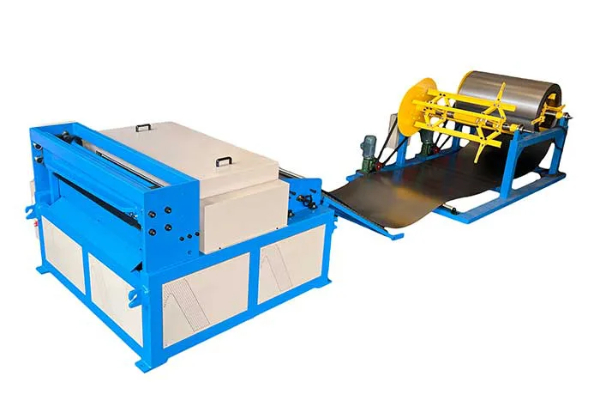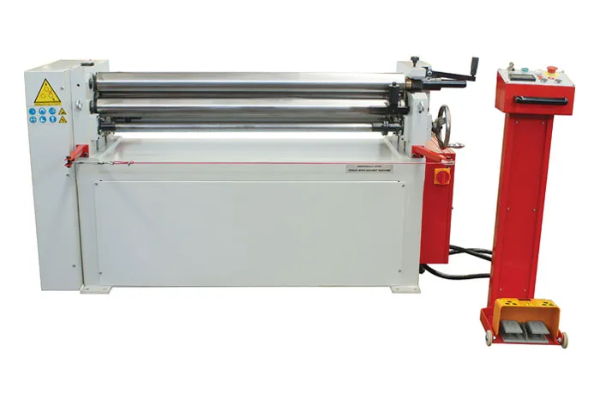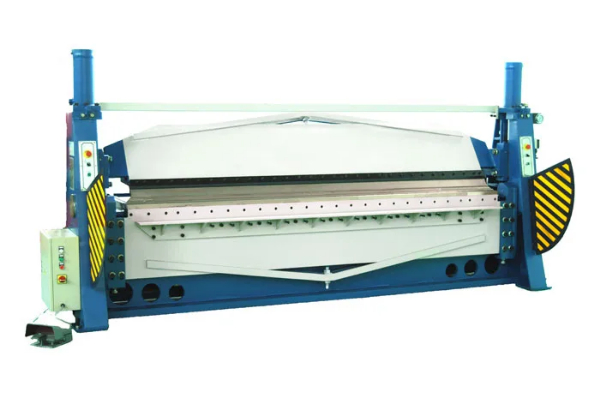
Safety Standards and Regulations for Metal Shear Machines
- By:Metmac
- 2024-07-30
- 346
Introduction
Metal shear machines are essential equipment in a variety of industrial and manufacturing settings. However, the operation of these machines can pose significant safety risks if proper standards and regulations are not adhered to. To ensure the safety of machine operators and those in the surrounding area, a comprehensive set of safety standards and regulations have been established. This article will provide an overview of these standards and regulations, highlighting the importance of their implementation and discussing key aspects that contribute to the safe operation of metal shear machines.
Hazard Identification and Risk Assessment
The first step towards ensuring safety is to identify potential hazards associated with metal shear machines and assess the risks they pose. Common hazards include:
– Point of Operation: The area where the shear blade makes contact with the metal, which presents a risk of crush, amputation, or lacerations.
– Moving Parts: Other moving parts, such as the flywheel, gears, and hydraulic cylinders, can cause entanglement or crushing injuries.
– Flying Debris: The shearing process can generate sharp metal fragments that can become airborne and cause eye or skin injuries.
Risk assessment involves evaluating the likelihood and severity of these hazards based on factors such as the type of machine, the materials being cut, and the operator’s experience.
Machine Design and Features
The design and features of metal shear machines play a critical role in enhancing safety. Key design considerations include:
– Guarding: The point of operation must be adequately guarded to prevent operator contact. Guards can be fixed, adjustable, or interlocked to prevent access when the machine is operating.
– Emergency Stop Buttons: Highly visible and accessible emergency stop buttons should be installed to allow operators to quickly stop the machine in the event of an emergency.
– Electrical and Mechanical Interlocks: These devices prevent the machine from operating unless all safety devices are in place and functioning properly.
– Foot Pedals and Controls: Foot pedals or other controls should be designed to minimize the risk of accidental activation.
Operator Training and Qualifications
Proper training is essential for ensuring that operators are aware of the hazards associated with metal shear machines and the safe operating procedures to follow. Training should cover:
– Hazard identification and risk assessment.
– Machine operation and maintenance.
– Emergency procedures and response.
– Use of personal protective equipment (PPE), such as safety glasses, gloves, and hearing protection.
Operators should also be qualified to operate the specific machine they will be using, based on their experience, knowledge, and physical abilities.
Maintenance and Inspections
Regular maintenance and inspections are crucial for keeping metal shear machines in safe operating condition. Maintenance procedures should include:
– Inspecting and replacing worn or damaged components.
– Lubricating moving parts.
– Checking and adjusting safety devices.
Inspections should be performed regularly, as per the manufacturer’s recommendations, to ensure that the machine is operating safely and meets all regulatory requirements.
Safety Audits and Compliance
Regular safety audits should be conducted to verify that metal shear machines are meeting all applicable standards and regulations. Audits should evaluate the machine’s design, maintenance, operator training, and overall safety practices. Compliance with safety standards is essential for ensuring that the machine is operating in a manner that minimizes risks to employees and others.
Conclusion
Safety standards and regulations for metal shear machines are essential for protecting the health and safety of machine operators and those in the surrounding area. By adhering to these standards and regulations, employers can create a safe working environment and minimize the risk of accidents. Proper machine design, operator training, maintenance, inspections, and compliance audits are all integral components of a comprehensive safety program for metal shear machines.
-
The Advantages of Using a Sheet Roll Forming Machine in Manufacturing
2024/09/14 -
How to Optimize Your Laser Sheet Cutting Machine for Maximum Performance
2024/09/12 -
How to Maximize Efficiency with Modern Sheet Metal Working Machines
2024/09/04 -
The Environmental Benefits of Using Duct Board Grooving Machines
2024/09/03
-
Boost Your Productivity with Advanced Sheet Metal Machinery Solutions
2025/05/31 -
Precision Sheet Bending and Cutting Machines for Superior Metal Fabrication
2025/05/31 -
Experience Superior Control with Modern Sheet Metal Bending Solutions
2025/05/31 -
Efficient Sheet Metal Machinery: Rolling, Punching, and Laser Cutting Technologies Explained
2025/05/20
-
A Guide to the Latest Innovations in Sheet Metal Folding Machines
2024/11/29 -
Key Features to Consider When Investing in a Sheet Metal Folding Machine
2024/11/28 -
Enhancing Precision with Advanced Sheet Metal Folding Machines
2024/11/27 -
How to Choose the Right Sheet Metal Folding Machine for Your Workshop
2024/11/26



